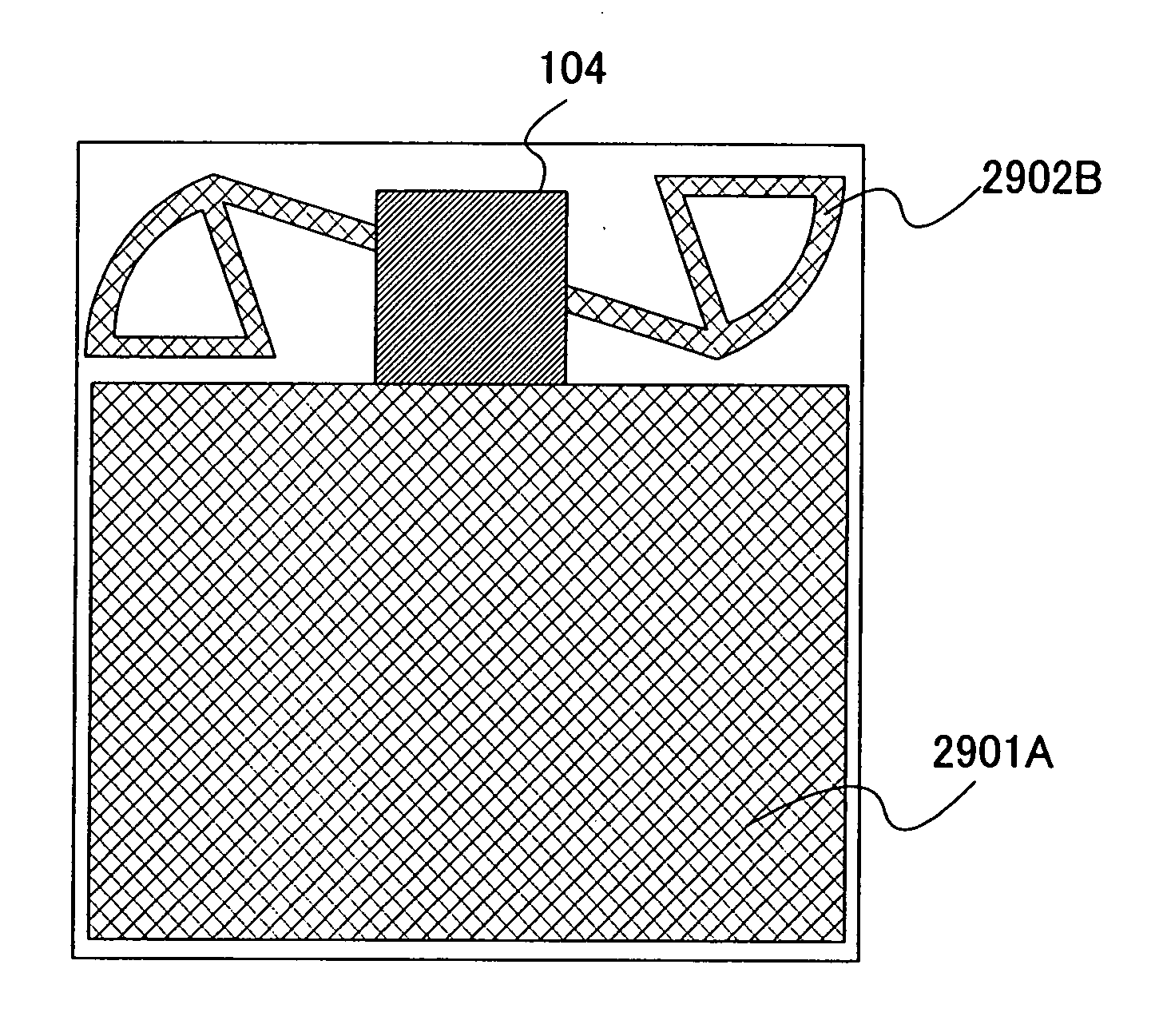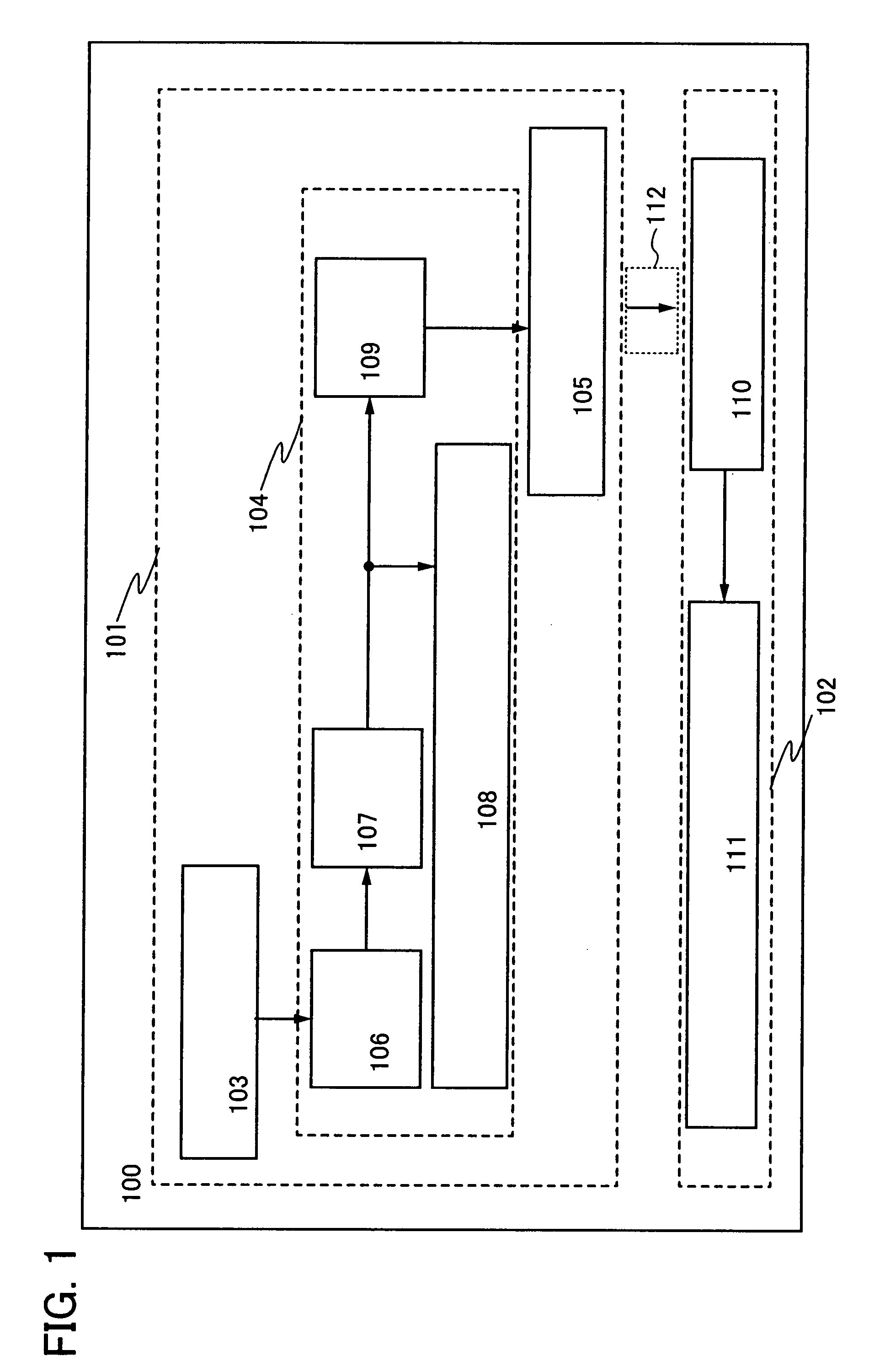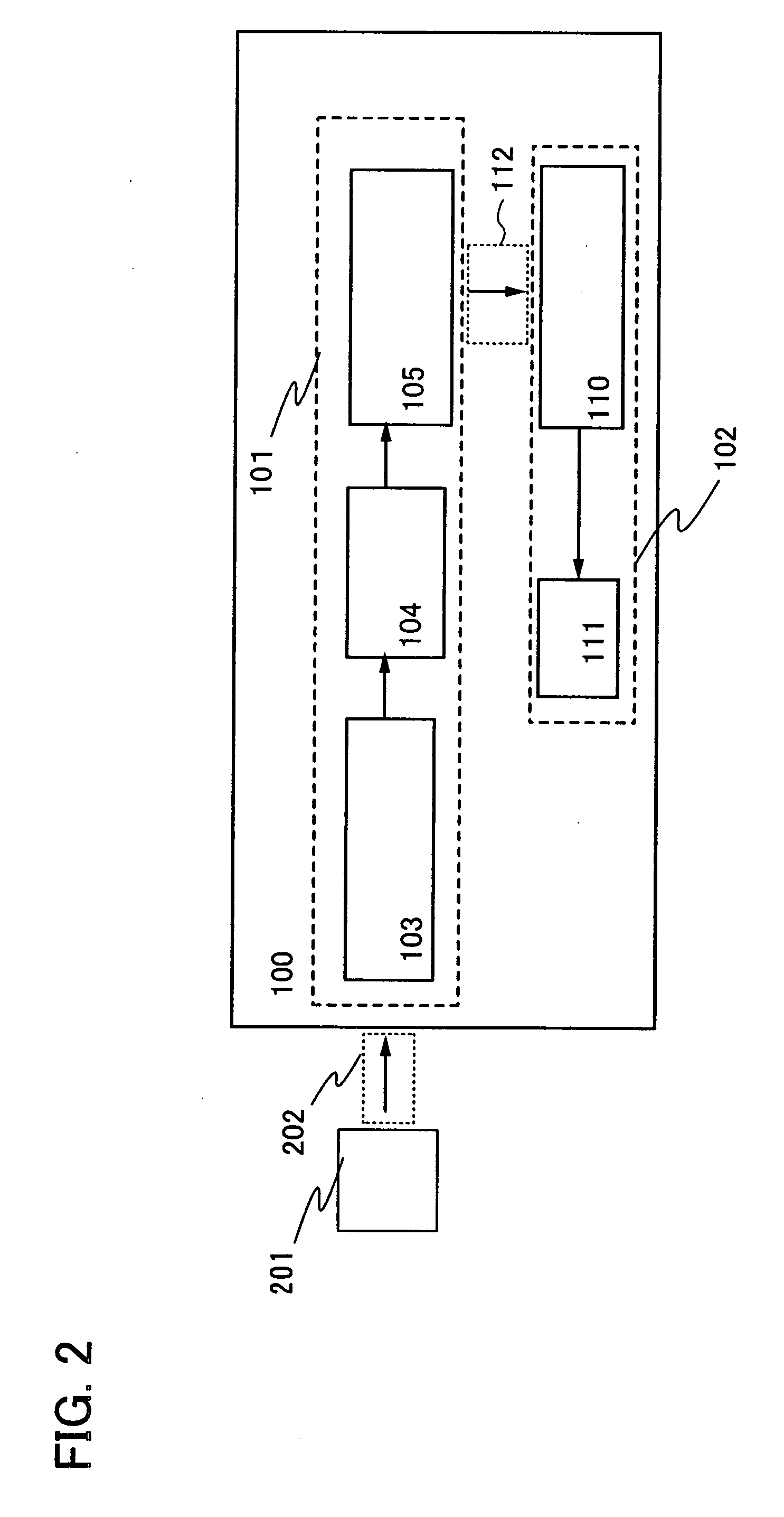Wireless power receiving device
a power receiving device and wireless technology, applied in the direction of wireless communication, resonant antennas, near-field systems using receivers, etc., can solve the problems of disconnection, poor connection, and the like, and achieve the effect of reducing production costs, low cost, and reducing production costs
- Summary
- Abstract
- Description
- Claims
- Application Information
AI Technical Summary
Benefits of technology
Problems solved by technology
Method used
Image
Examples
embodiment mode 1
[0049]This embodiment mode will describe an example of a wireless power receiving device of the present invention with reference to drawings.
[0050]A wireless power receiving device 100 shown in this embodiment mode includes a power transmitter and receiver portion 101 and a load portion 102. The power transmitter and receiver portion 101 includes a first antenna circuit 103, a battery portion 104, and a second antenna circuit 105. The battery portion 104 includes a rectifier circuit 106, a charging control circuit 107, a battery 108, and a discharging control circuit 109. In addition, the load portion 102 includes a third antenna circuit 110 and a load 111.
[0051]Note that in the wireless power receiving device 100 shown in FIG. 1, electromagnetic waves 202 are transmitted to the first antenna circuit 103 in the power transmitter and receiver portion 101, by an electromagnetic wave feeder 201 provided outside of the wireless power receiving device 100 as shown in FIG. 2. The electrom...
embodiment mode 2
[0088]This embodiment mode will describe an example of the wireless power receiving device provided with an RF tag as the load of the wireless power receiving device shown in Embodiment Mode 1 with reference to drawings. Note that the structure in this embodiment mode is not limited to the RF tag and may be applied to any data transmitter and receiver device which is capable of communicating data wirelessly.
[0089]An example of the wireless power receiving device in this embodiment mode will be described with reference to FIG. 13.
[0090]The wireless power receiving device 1300 shown in FIG. 13 includes the power transmitter and receiver portion 101, and the load portion 102. The power transmitter and receiver portion 101 includes the first antenna circuit 103, the battery portion 104, and the second antenna circuit 105. In addition, the load portion 102 includes the third antenna circuit 110 and an RF tag 1301.
[0091]Note that the structures of the first antenna circuit 103, the batter...
embodiment mode 3
[0101]In this embodiment mode, as the load in the wireless power receiving device shown in Embodiment Mode 2, one example of the wireless power receiving device including the rectifier circuit, the power supply circuit, and the signal processing circuit in the RF tag of Embodiment Mode 2 will be described with reference to drawings. In this embodiment mode, a configuration in which communication signals are transmitted to and received from the outside and electricity is supplied through the radio signals, by using a power transmitter and receiver portion will be described.
[0102]One example of the wireless power receiving device in this embodiment mode will be described with reference to FIG. 16.
[0103]A wireless power receiving device 1600 shown in FIG. 16 includes the power transmitter and receiver portion 101, the load portion 102, and a signal transmitter / receiver portion 1601. The power transmitter and receiver portion 101 includes the first antenna circuit 103, the battery porti...
PUM
 Login to View More
Login to View More Abstract
Description
Claims
Application Information
 Login to View More
Login to View More - R&D
- Intellectual Property
- Life Sciences
- Materials
- Tech Scout
- Unparalleled Data Quality
- Higher Quality Content
- 60% Fewer Hallucinations
Browse by: Latest US Patents, China's latest patents, Technical Efficacy Thesaurus, Application Domain, Technology Topic, Popular Technical Reports.
© 2025 PatSnap. All rights reserved.Legal|Privacy policy|Modern Slavery Act Transparency Statement|Sitemap|About US| Contact US: help@patsnap.com



